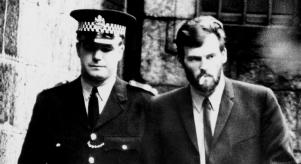
Wrongful Convictions
Rachel Nickell was a 23-year-old mother who one day in July 1992 went walking with her son on Wimbledon Common.She was almost decapitated in a savage stabbing and sexual assault by Robert Napper.But around the same time, unemployed Colin Stagg made a badly timed decision to walk his dog.This innocent action placed him near the crime scene. This, combined with a flawed police pursuit of a suspect psychological profile, meant that Colin was wrongly imprisoned and subjected him to fifteen years of hell. Along the way there was an infamous ‘honey-trap’ but eventually in 2008, the killer confessed and the police apologised to Colin.In 2011, Rachel’s son gave his first press interview. Despite all he’s been through, he came across as an assured young man, neither self-pitying nor desiring of revenge.Rachel Nickell's case was featured in an episode of Crimes That Shook Britain.Read the Rachel Nickell CaseCrime File.
In 1984 Kirk Bloodsworth was convicted of the rape and murder of a nine-year-old girl, Dawn Hamilton, in Maryland, USA. He was sentenced to death.But as he waited to be executed, he read a book on DNA fingerprinting. He persuaded his lawyer to petition for the evidence against him to be DNA tested.His solicitor was later able to ring him with the results;“Kirk you’re innocent, man, you’re innocent...your DNA test has come back and it has excluded you 100% as the person responsible for Dawn’s murder.”Sir Richard Branson later flew Kirk over to England to meet the man who invented DNA profiling, Professor Sir Alec Jeffreys. And in an even more bizarre twist, it later transpired that Bloodsworth was brought his library books in prison by Kimberly Shay Ruffner, the man actually responsible for the rape and murder of Dawn.
Gerry Conlon of the wrongfully jailed Guildford FourBefore 9/11 and 7/7 the IRA were the number one terrorist threat. Their 1970s bombings of the Birmingham and Guilford pubs murdered and maimed hundreds of people. But the British need for revenge lead to multiple miscarriages of justice.The Birmingham Six - as the innocently jailed men came to be known - spent 16 years behind bars before their convictions were quashed in 1991. The Guilford Four – three men and one woman – spent 15 years in prison. In both cases evidence had been tampered with and statements altered.It was such cases that lead to the Police and Criminal Evidence Act and it’s because of that that all police interviews are now tape-recorded.
I’m dying tomorrow. But I’m innocent. Clear my name.
James Hanratty was a clueless career criminal and a pretty poor petty thief who was said to have suddenly, in August 1961, turned into a murdering rapist.He was convicted of kidnapping an adulterous couple in a car and killing the man and then raping the woman. Their bodies were dumped on the A6 road and so the killing became known as the A6 murder.There were many inconsistencies with Hanratty’s conviction. About the only crime Hanratty was competent at was being a car thief. But the man who murdered and raped the couple had to get driving lessons from his rape victim. Her description of the killer was different from the hair colour and appearance of Hanratty.The jury took just ten hours to reach their verdict - despite not even being sure what ‘reasonable doubt’ meant – and so 25-year-old Hanratty was hung.The decision to abolish the death penalty in 1965 is said to have been influenced by concerns over whether Hanratty should have been executed.Read the A6 murdersCrime File.
Paul Blackburn was just 14-years-old when he was arrested. In 1978, after an unfair trail, he was convicted of the assault and attempted murder of a nine-year-old boy. Aged just 15, he spent the next 25 years in 18 different prisons.His insistence on his innocence meant two things: he was denied parole as he was considered not to have accepted his guilt; and he was regularly beaten as he refused to accept the extra security sexual offenders receive in prison.He was finally released on license in 2003 and in 2005 the Court of Appeal quashed his conviction.In an interview several years after his release he revealed how a quarter of century inside had changed him. He said he never felt scared in the worst parts of London at any time of the night, but that because of the sensory overload, he couldn’t cope with shopping in a modern supermarket.




